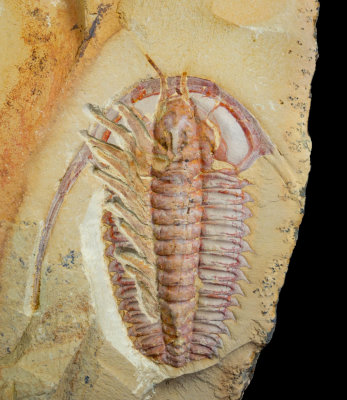
Eoredlichia intermedia, 5 cm long, Lower Cambrian, Chengjiang, China, partially dissected to show limbs and antennae. |
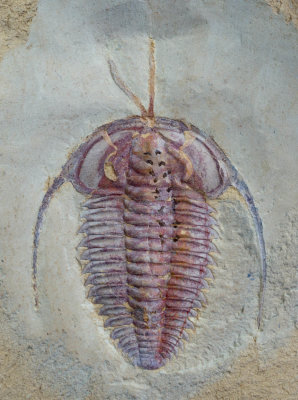
Eoredlichia intermedia (3 cm long), Lower Cambrian, Chengjiang, China, showing antennae and diverticulae. |
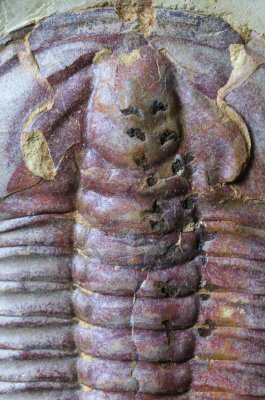
Detail of Eoredlichia showing paired gastric diverticulae. Glabella length is 8 mm. |
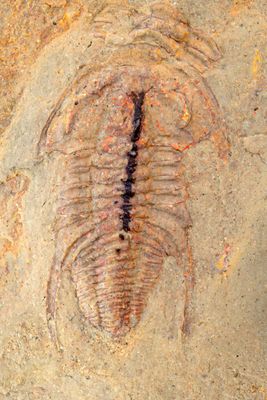
Balcoracania dailyi (12 mm long), Emu Bay Shale Fm, Lower Cambrian, S Australia, showing mineralized gut. |
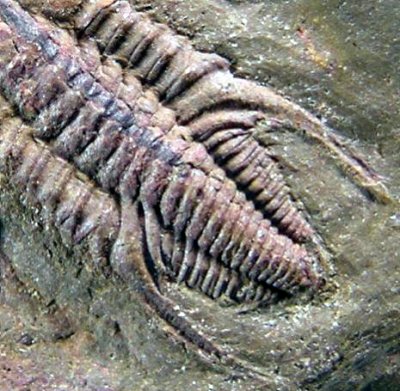
Balcoracania dailyi (12 mm long), Emu Bay Shale Fm, Lower Cambrian, S Australia, showing mineralized gut. |
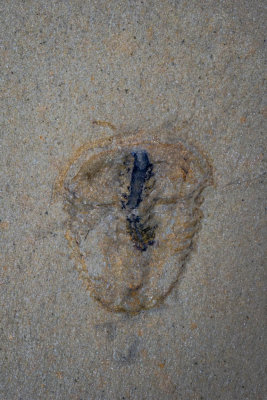
Eokochaspis piochensis, 13 mm with gut and antennae. Basal Middle Cambrian Comet Shale member, Pioche Formation, Nevada. |
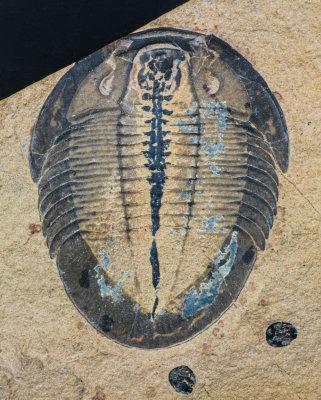
Meniscopsia beebei with mineralized gut and gastric caeca, 36 mm. Weeks Formation, M-U Cambrian, Utah, USA. |
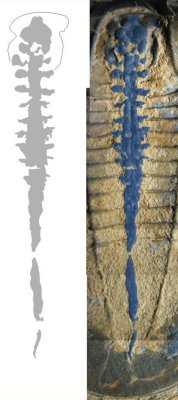
Detail of the Meniscopsia mineralized alimentary canal and caeca. The outline of the hypostome is shown. |

Cedaria minor with preserved gut, 12 mm, Weeks Formation, M-U Cambrian, Utah, USA. |
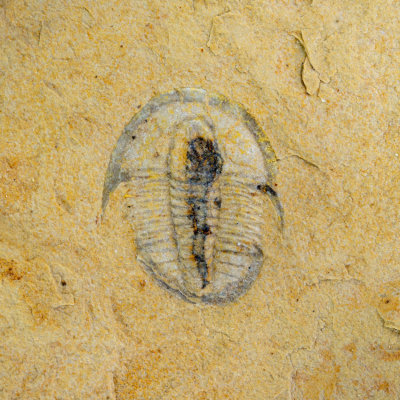
Cedaria minor with preserved gut, 12 mm, Weeks Formation, M-U Cambrian, Utah, USA. |

Bavarilla sp (4 cm) with spectacular complete antennae showing setal hairs, Lower Ordovician Fezouata Formation, Morocco |
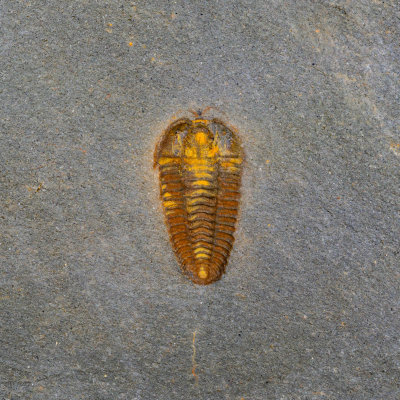
Bavarilla with antennae, Fezouata Formation, Zagora, Morocco |
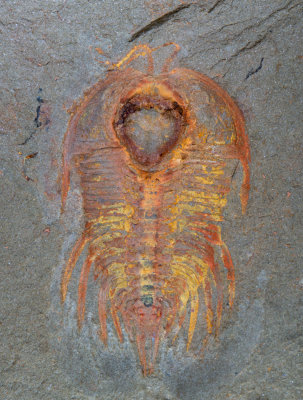
Anacheirurus sp., 32 mm long, with antennae, from the Fezouata of Morocco. Early pyrite has oxidised to colourful ochres. |
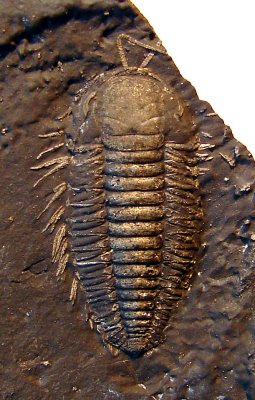
Triarthrus eatoni, 22mm showing limbs and antennae. Whetstone Gulf Formation, U Ordovician, Lewis Co, New York, USA. |
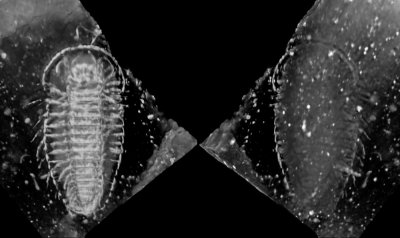
Dorsal and ventral views in micro CT scan of pyritized Triarthrus eatoni with limbs, 22 mm. |

Detail of Triarthrus antennae showing some fine setal hairs on proximal segments |

Triarthrus eatoni, 49 mm showing limbs and antennae. Whetstone Gulf Formation, U Ordovician, Lewis Co, New York, USA. |

Triarthrus eatoni 49 mm in X-ray micro CT image |

Triarthrus eatoni 49 mm in X-ray micro CT image |

Triarthrus eatoni, 45 mm showing limbs and antennae. Whetstone Gulf Formation, U Ordovician, Lewis Co, New York, USA. |
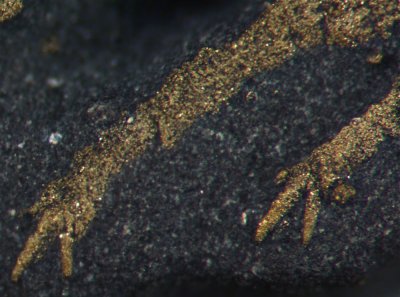
Detail of Triarthrus claws |
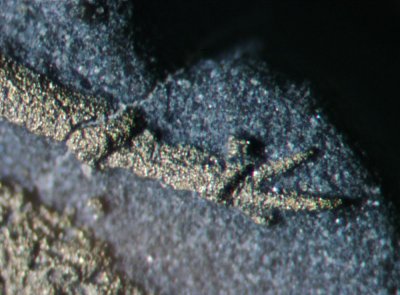
Detail of Triarthrus claw |
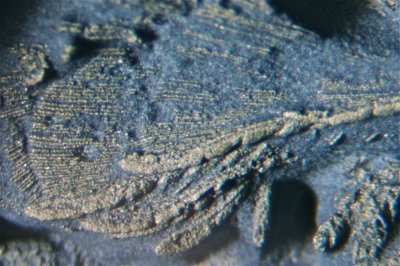
Detail of Triarthrus exopods showing terminal paddles and filamentous lamellae. |
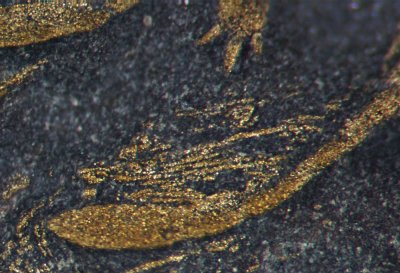
Detail of an exopod terminal "oar" |
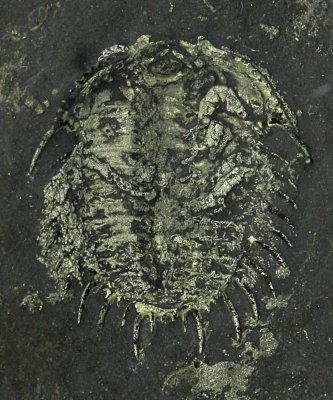
Meadowtownella cf trentonensis, 9 mm, showing limbs and antennae. Lorraine Group, U Ordovician, Lewis County, New York. |
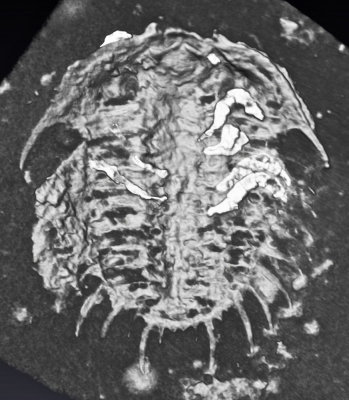
Meadowtownella with limbs and antennae. CT image. |
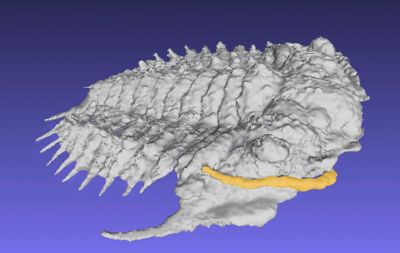
Meadowtownella extract from CT image showing swept back antenna |

X-radiograph showing Rhenops sp, 45 mm long. Limbs are visible. |

Rhenops sp, 45 mm ventral view, complete with limbs and antennae. Hunsrueckschiefer, L Devonian, Bundenbach, Germany. |
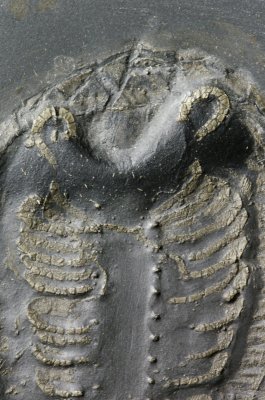
Rhenops sp, 45 mm complete with limbs and antennae. Hunsrueckschiefer, L Devonian, Bundenbach, Germany. |

Rhenops detail of antenna, like the Triarthrus showing setal hairs |
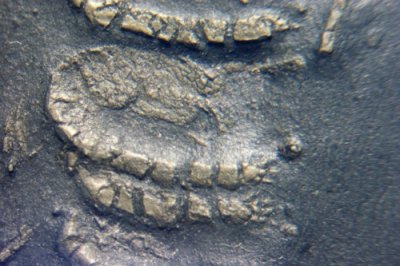
Rhenops detail showing limbs with claws |

Chotecops ferdinandi, 55 mm complete with limbs and antennae. Hunsrueckschiefer, L Devonian, Bundenbach, Germany. X-radiograph |

Chotecops ferdinandi, 55 mm complete with limbs and antennae. Hunsrueckschiefer, L Devonian, Bundenbach, Germany. |
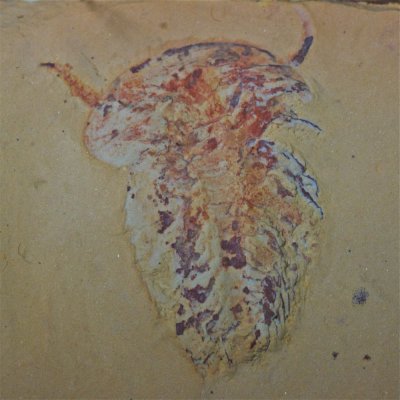
Naraoia spinosa, 15 mm long, showing antennae and limb preservation. Heilinpu Formation, Lower Cambrian, Chengjiang, China. |
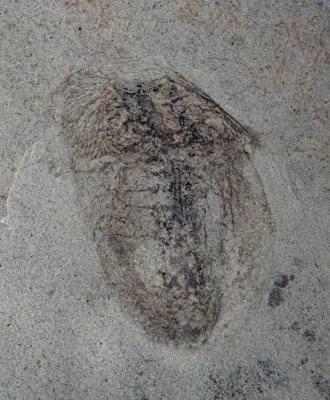
Naraoia, 2 cm showing alimentary canal, digestive diverticula and faint traces of limbs, Marjum Formation, Middle Cambrian, Utah |
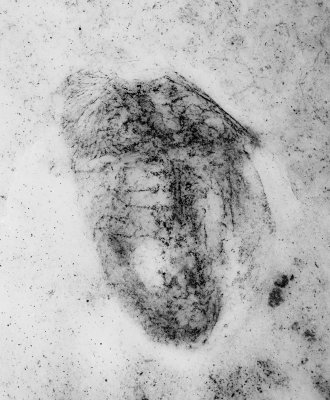
Naraoia, Marjum Formation, adjusted image |

C.E. Beecher, frontispiece to Raymond (1920) |

Beecher dedication in Raymond (1920) |
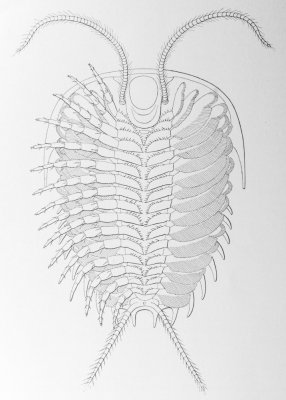
Restoration of Olenoides serratus, Fig. 8 in Raymond (1920), "Neolenus" at the time. |

Restoration of Triarthrus, Fig. 10 in Raymond (1920) |
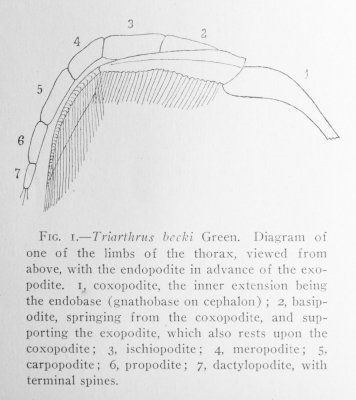
Reconstruction of Triarthrus biramous appendage by Raymond (1920). |
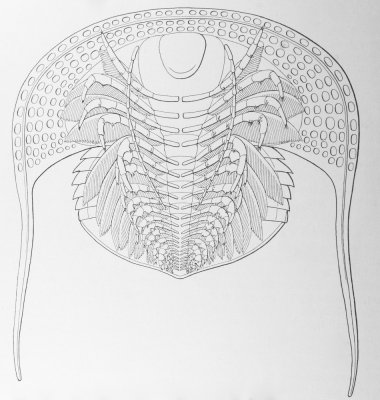
Restoration of Cryptolithus, Fig. 20 in Raymond (1920) |

Restoration of Isotelus gigas, Fig. 9 in Raymond (1920), based on Walcott's thin sections and a specimen from Ohio. |

Mickleborough (1881) |
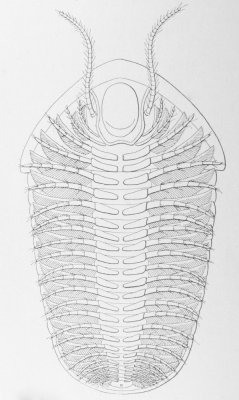
Restoration of Calymene (now Flexicalymene) senaria, Fig. 16 in Raymond (1920). |
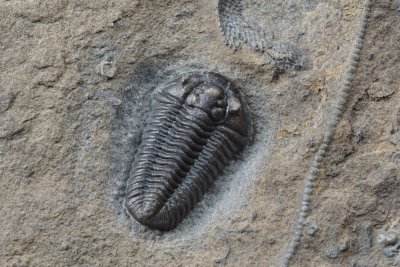
Flexicalymene senaria, 22 mm long. Trenton Group, Rust Formation, Spillway Member, Walcott-Rust Quarry, Russia, New York. |
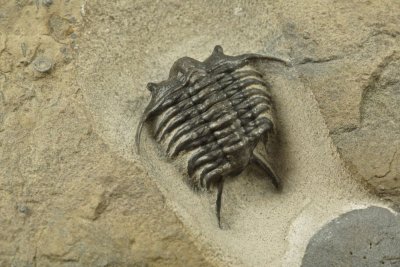
Ceraurus pleurexanthemus, partially enrolled, 25 mm. Trenton Group, Rust Formation, Spillway Member, Walcott-Rust Quarry, N York |

Camping on the Cambrian |
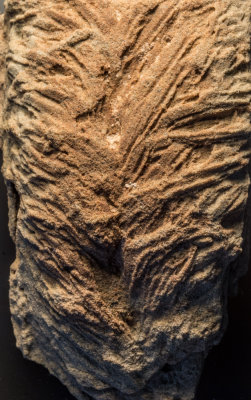
Cruziana omanicus, Cambrian, Huqf, Oman. Width of trace 4 cm. |

Cruziana omanicus, Cambrian, Huqf, Oman. Width of trace 4 cm. |

Cruziana omanicus, Cambrian, Huqf, Oman. Width of traces about 4 cm. |

Cruziana omanicus, Cambrian, Huqf, Oman. Width of traces about 4 cm. |
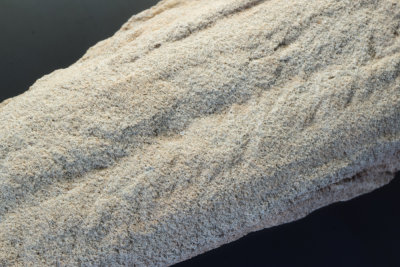
Cruziana semiplicata, Cambrian, Huqf, Oman. width 3 cm. |
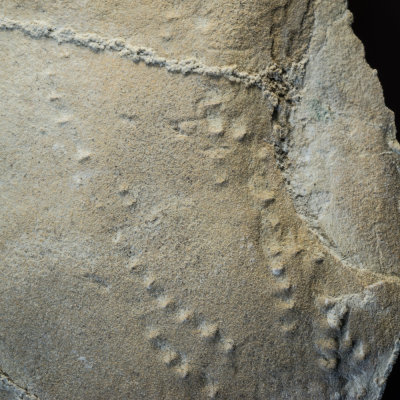
"Trachomatichnites" or "galloping" form of Diplichnites (Seilacher 2007 Plate 8). |











